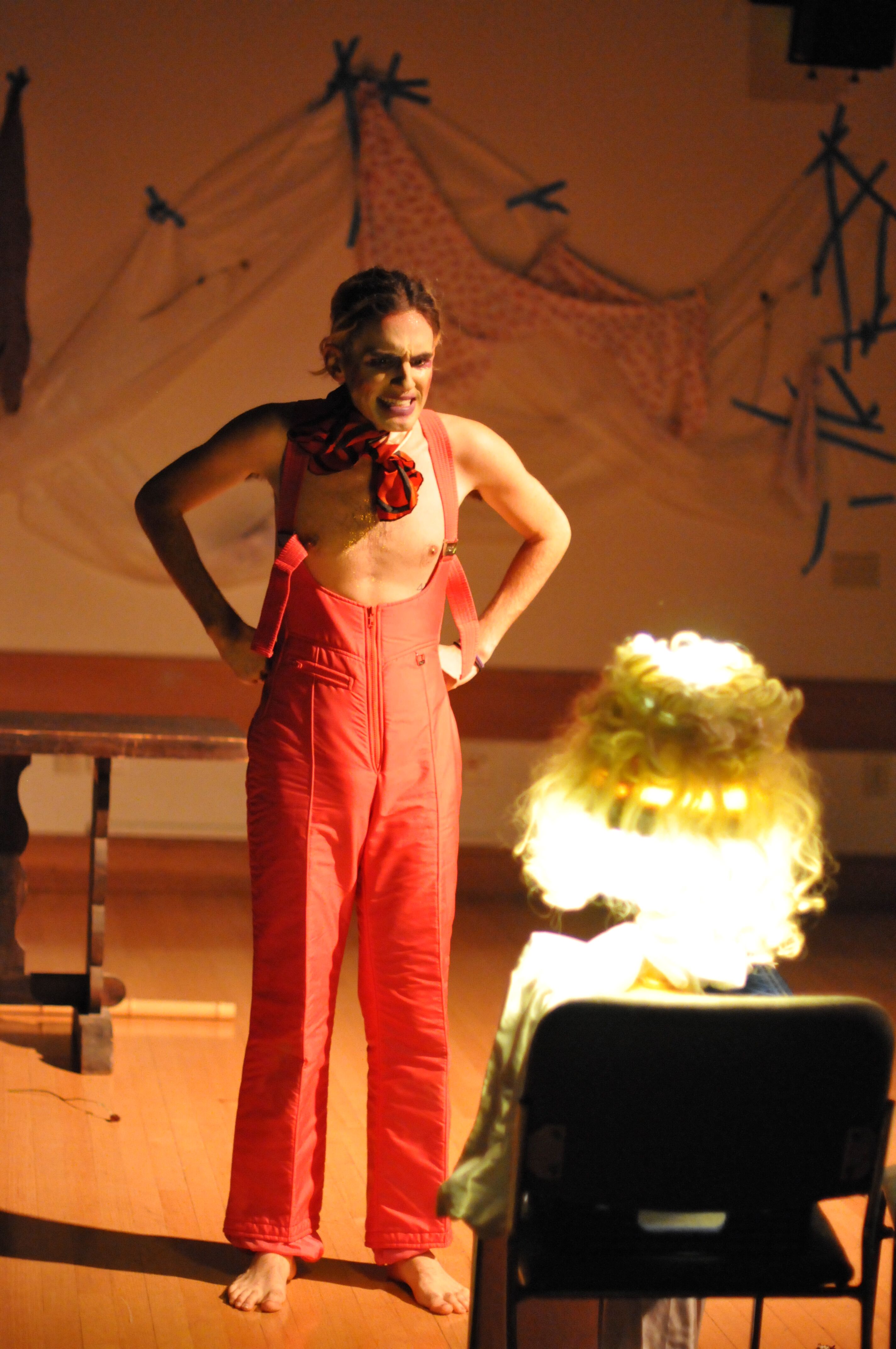
Performing in the Elliot Programming Center this Thursday to Saturday, “Bottom Bride” is Eric Eich’s TAPS (Theater and Performance Studies) senior capstone project featuring the wedding of his alter ego, Silk Worm. Despite its wild setting, the interactive play accomplishes Eich’s goal to convince the audience to cheer for Silk Worm’s new love after a ruined first engagement.
The audience is immediately sucked into this fantasy world as the three bridesmaids (alternating cast of Simone Hudson ‘16, Nicole Bennett-Fite ‘16, Maggie Medlin ‘15, Sage Behr ‘15, Phoebe Oathout ‘18) greet them out in the porch of the “dismal roadside chapel.” As a wedding planner (Erica Knox ‘16) checks names off a list, each audience member is given a character. For example, I was referred to as Irene Bullman receiving sympathetic comments on the sixth and seventh fingers that I had recently lost. The actors maintain this level of audience participation until the very end of the play by inviting all of the guests to sing, dance, and chant throughout the performance.
Although the set is limited to an altar and some violet fabric hanging on the wall, Silk Worm overcomes this spatial absence by stimulating all five senses of the audience. The abrupt changes in lighting—from saturated pink to blinding white for example—signal the bride’s fluctuating mood. Her agony is amplified as she sings about her ex-finance, a bee-man (Will Funk ‘16), in a crackling voice. Silk Worm continuously breaks the fourth wall, offering sour gummy worms for the audience to eat at one point in the piece.
The unconventional use of multimedia platform adds to the already puzzling atmosphere of the play. The audio mashup of crying babies, sexual noise and popular songs disorients the audience before the play even starts. A video projection of a costumed frog named Professor Freauguille sporadically interrupts the play. At the basic level, I had a hard time processing the story of an engagement between a bee-man and a worm or the marriage between a flower and a worm. Ultimately, shock and awe is the most accurate descriptor of the play.

For this reason, I did not always know what to make of the play; however, I could identify with the fundamental spirit of it by looking beyond the surreal elements. Although the bee-man is literally a swarm of bees, many can relate to falling in love with someone who “could never be pinned down” and “never kisses but only stings.” That Silk Worm finally finds love in a flower who kept her side all this time conveys a common sentiment. Because the feeling present in the play is so recognizable, it is possible to grasp the heart of the play without fully understanding its fantastical aspects.
The play balances an imaginative setting and interactive approach in order to ultimately make a comment on marriage and gender. Even in Eich’s world where “weddings are bearable [and] worm marriage is legal,” love is love: It is complicated, messy, but wonderful. The audience, therefore, leaves Silk Worm’s wedding as distant relatives of her, supporting her union with their hearts.
Contact Grace Yoo at gyoo ‘at’ stanford.edu.
This article has been updated to reflect students’ current identities.
